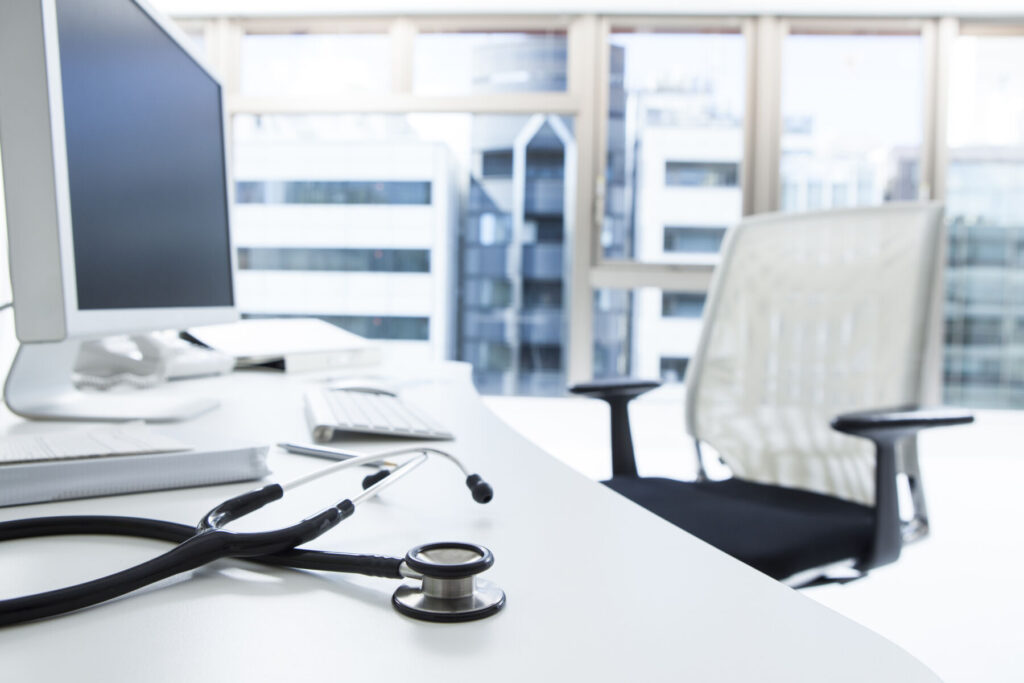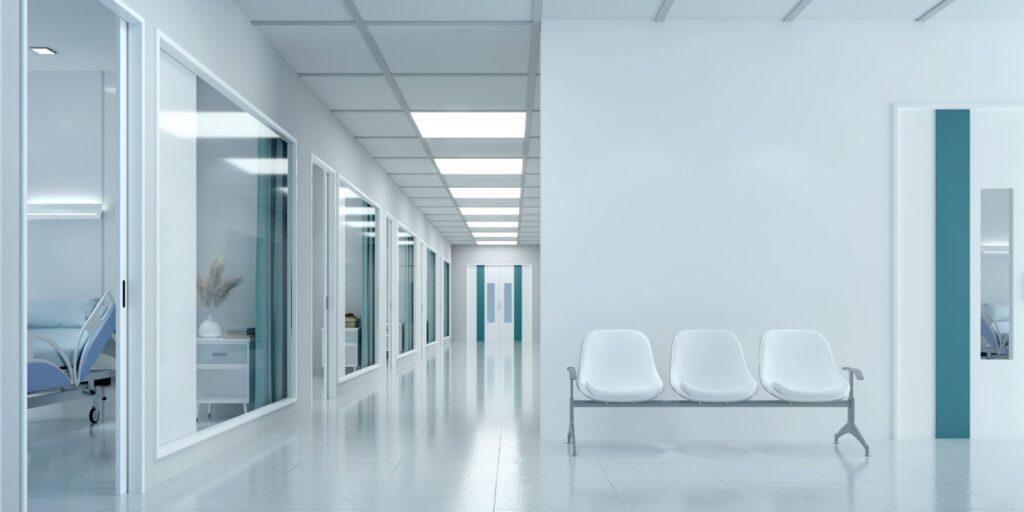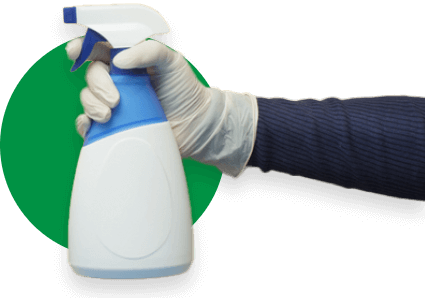No matter where you live, COVID-19 has left a major impact on the world of health and hygiene. This is especially true for medical offices that have cleaning protocols.
But, according to an article published by CBS, it was reported that of all hospitals, more than 75% had been cited for serious cleanliness and sanitation violations.
Another study done by the Journal of Hospital Infection revealed that although 18% of various hospital sites checked by researchers looked dirty, an astonishing 76% of them actually had unacceptably high levels of bacteria.
From equipment for medical office cleaning to hiring medical office cleaners, it’s important that medical facilities make sure that their offices are adhering to proper protocol.
Here is a complete guide to how medical offices should clean their spaces and maintain their cleanliness.
Understanding the Importance of Medical Office Cleaning
The first step to understanding medical office cleaning services is understanding why medical office cleaning is so important.
Here are a few reasons why cleaning medical offices matters.
Cleaning Medical Offices Creates a Safe Environment
With sick patients constantly entering and leaving, all medical offices and medical facilities should be expected to be clean, sanitized, and disinfected. But that isn’t the reality.
In fact, it’s been shown through multiple studies that disinfection and cleaning of surfaces in hospitals is suboptimal, with only 40% – 50% of surfaces that should be cleaned simply wiped by housekeepers.
As a result, viruses, bacteria, and other pathogens are left behind, which puts others at risk for disease and illness. So, medical offices cleaning their facilities is crucial to maintaining the overall health of those in the environment.
Medical offices and medical facilities implementing protocols for proper and thorough medical office cleaning also help to keep the staff healthy. A healthy staff is crucial to caring for patients and keeping the practice running.
A Good Doctor’s Office Makes a Good Impression
The way a medical facility or medical office looks good to the public. Visitors notice a dirty or unkept office and can quickly become uncertain of your services as a result.
So, when cleaning medical offices, make sure to pay attention to things like clean floors, bathrooms, and air quality. In fact, hospital disinfection services capture 99.97% of airborne pathogens.
The truth is that visitors won’t come back to a medical office or medical facility if there is little to no effort in a doctor’s office cleaning protocol.
Remember that your image impacts your brand, and a bad brand can lead to terrible business.

Medical Office Cleaning Helps Maintain a Clean Environment
When dealing with a variety of diseases and illnesses, it’s important that everything is as clean as possible. A periodic check or spot cleaning will not do.
This is where professional medical cleaning services can come in handy. Like household deep cleans, cleaning services for medical offices exist to ensure that every area and hard-to-reach spot is sanitized and disinfected.
Medical office cleaners go beyond the usual doctor’s office cleaning protocol. These are people who understand materials, products, equipment, and technique. So, medical office cleaners are extremely valuable in bringing facilities up to code.
Medical facilities and medical offices require deep levels of cleanliness. If left unkempt, dangerous germs can thrive and seriously complicate a patient’s health.
In fact, complications are common in dirty facilities. These hospital-acquired infections are known as “nosocomial infections”, of which, during hospitalization, among all the major complications that occur, these nosocomial infections account for over 50%.
Medical cleaning services help to reduce these risks and cases. Regular professional medical office cleaning is absolutely necessary for patient areas, high-touch surfaces, and high-traffic areas.
To truly maintain a safe and healthy environment for patients and staff, a protocol for cleaning medical offices should always include regular medical cleaning services.
Medical Office Cleaning Services Helps Prevent Risk Exposure
Medical professionals understand the importance of sanitizing hands and devices as they move from patient to patient. However, some practices fail to apply the same level of cleanliness to the rest of the building.
That’s why medical office cleaners are trained and skilled in this area. With medical cleaning services, cleaning requirements, and protocols are guaranteed to be met and maintained.
Remember that areas like patient rooms, surgical areas, and more have specialized cleaning requirements. For these areas, surface cleaning will not be enough. Not relying on cleaning services for medical offices creates a risk of exposure for everyone in the facility.
With assistance from medical office cleaning services, staff and patients can feel fully protected from possible exposure.
Medical Cleaning Services Positively Impact Earnings with Patient Satisfaction
While cleaning services for medical offices can be expensive, the long-term impact makes it worth it.
The truth is that the cleanliness of a facility matters to visitors, and a dirty office will hold your practice back from success. Medical cleaning services not only keep everyone healthy but also boost patient satisfaction, which will keep them coming back.
In short, striving to meet your patient’s expectations for a clean facility will be beneficial to your overall practice.
Stop Covid-19 from Spreading with Medical Office Cleaners
With the medical field still feeling the impacts of COVID-19, it’s important to note how a medical office’s cleaning protocol can protect patients and staff from exposure.
Whether they know it or not, many patients walk in with COVID-19 on a daily basis, and that leaves everyone in the facility at risk. This is especially true for chronically ill people.
Regular cleaning and sanitizing are critical in preventing this viral spread. With medical office cleaning services, the risk of exposure is significantly reduced thanks to their access to different chemicals, materials, and equipment.
Medical Office Cleaning Materials/Supplies Checklist
You can’t mop a floor without a bucket, water, and mop. You can’t wipe a counter without a cleaning solution and rag. You can’t vacuum without a vacuum.
The reality is that proper cleaning materials and supplies are crucial to thorough sanitization and disinfection. Without the right chemicals, materials, or equipment, facilities cannot guarantee that their building is hygienic and safe for operation.
To make sure your facility is set for a clean success, here’s a checklist of supplies and materials.
Needed Materials/Supplies
- Mop bucket
- Germicidal cleaner (a CDC-approved solution is best)
- Face masks (preferably N-95 rated)
- Disposable latex or non-latex cleaning gloves
- Soap dispenser refills
- Wastebasket liners
- Dustpan
- Telescoping duster
- Fresh cleaning cloths
- Clean mop heads
- Stainless steel cleaner (needs to be a specific formula for cleaning medical waste containers)
- Red bags (for medical waste disposal)
- Odor remover (VERY important)
- Toilet bowl brush
- Toilet cleaning brush
- Eco-friendly toilet cleaner
- Glass Cleaner, multi-surface cleaner, etc.

Recommended Steps for Effective Medical Office Cleaning
Like rooms in a house, areas in medical facilities need a specialized cleaning routine that ensures it’s up to code.
If an area isn’t cleaned properly, the risk of transmission and exposure is high. That means patients and staff are no longer safe and have possibly been exposed to a life-changing disease or illness.
To make sure your facility is hygienic, the following areas need to be closely examined and cleaned regularly:
- Trash and waste disposal
- Waiting rooms and exams rooms
- Restrooms
- Bath and changing facilities
- Air ducts
- Cleaning/sterilizing toys
- Floors
- Furniture
- Common areas
- Touchpoints
Let’s take a look at each of these areas and how to properly clean each of them.
Step 1: Trash & Waste Disposal
No trash or waste in a doctor’s office should ever be left unattended overnight. Cans should be emptied daily at a minimum, and every receptacle should be thoroughly cleaned and sterilized, too. Medical offices also have different types of waste to dispose of, so the cleaning crew should be familiar with the proper disposal of hazardous and non-hazardous waste. All cleaners should also immediately dispose of their gloves once they have finished and wash their hands thoroughly.
Step 2: Waiting Room & Exam Rooms
These are the high-traffic areas for germs and bacteria. All dirt, debris, and dust need to be cleaned daily, and disinfectant and sanitizer should be applied after each cleaning. Additionally, all cleaning wipes need to be used with the 8-fold cleaning method to prevent cross-contamination. Most professionals use numbered microfiber cloths to help them keep track of which side has already been used.
Step 3: Restrooms
Toilets and urinals need to be thoroughly cleaned daily. Slow and thorough cleaning is the key here. Toilet cleaners should soak in the toilet bowl for no less than 15 minutes to remove stains, kill germs and eliminate tough odors. Every surface should be well-scrubbed, preferably with a diluted bleach cleaner intended for bathroom surfaces. Once you have finished with the toilets, be sure to flush and wash any brushes before storing them in a cool, dry place.
Step 4: Bath & Changing Facilities
Showers, bathtubs, and sinks should also be cleaned with a bleach-based bathroom cleaner, and all high-touch surfaces need to be disinfected and sanitized. Light switch plates, doorknobs, and towel dispensers should be a top priority. Don’t forget to clean the shower curtains, too. Additionally, don’t allow any soiled towels to sit in the bathroom. Immediately remove and launder them as soon as possible.
Step 5: Air Ducts
Having your HVAC ducts regularly cleaned by professionals improves air quality and helps to prevent the spread of allergens, mold, pathogens, and bacteria. This is a task best left to professionals, but it is essential for keeping your medical office sanitary.
Step 6: Cleaning/Sterilizing Toys
If you have toys for patients in the waiting area, they need to be regularly cleaned and sterilized. This is primarily a concern for pediatric physicians, especially with the number of children that will be visiting daily. The preferred method is to soak all toys in a cleaning solution for no less than ten minutes.
After ten minutes have elapsed, all toys should be stirred and allowed to soak for a further ten minutes. All toys should then be thoroughly rinsed and allowed to dry before they are loaded back into the toy box.
Step 7: Floors
Yet another daily task, all floors should be cleaned daily before being disinfected and sanitized. Carpets need to be vacuumed and then steam cleaned to eliminate any potential germs or pathogens embedded in the fibers. Wooden or vinyl floors need to be mopped and treated with disinfectant and sanitizer before being allowed to dry completely. Overnight floor cleaning is best for these surfaces since they pose a significant slip-and-fall risk during the day while drying.
Step 8: Furniture
Like the waiting room and exam rooms, furniture needs to be cleaned with an 8-fold cloth before being disinfected and sanitized. Upholstery should also be steam cleaned regularly to prevent pathogens or dirt from accumulating in the fibers.
Step 9: Common Areas
Break rooms and kitchenettes need to be kept clean, disinfected, and sanitized at all times. They will most likely need to be treated multiple times per day, as these are the areas where your staff will be without their PPE every day. Additionally, all appliances like the microwave, toaster oven, and refrigerator need to be wiped down inside and out to keep their surfaces sanitary. Using disinfectant and sanitizer should be used as often as possible.
Step 10: Touch Points
Recheck and clean all high-traffic touchpoints throughout your medical office. Light switches, door handles, and door surfaces should be cleaned, disinfected, and sanitized multiple times per day. Patients and staff will come into contact with these surfaces the most throughout your office hours, so keeping them sanitary is of the utmost importance.
Are you searching for a commercial cleaning service for your medical office? The experienced staff at Dallas Janitorial Services has the equipment and training you need to keep your office clean and sanitary. Contact us today for a consultation and more information about how we can help you protect your patients and staff from COVID-19.

Why Should You Outsource Medical Cleaning?
For facilities with a lot of staff, it may seem counterintuitive to outsource medical cleaning. But the truth is there are many reasons why outsourcing is the best option.
Here are a few reasons why outsourcing medical cleaning is better.
- Cleaning companies have EVS-qualified directors who are familiar with government healthcare regulations, making them the most trusted for proper cleaning.
- Thanks to constant staff education, all cleaning processes and procedures are up-to-date.
- By reducing the risk of transmission, exposure, and injury, they’re a guaranteed cost saver (PTO, worker’s compensation, HR, and more).
- Cleaning companies have top-of-the-line equipment and products, resulting in a high-quality clean.
- With a regular cleaning schedule, your facility will always be inspection ready.
All of these reasons and more are why hiring a professional cleaning company is the best way to ensure high-quality and thorough sanitization. No matter where you’re located, a cleaning company is always ready to help.
Requisite Skills
Asking your office staff to conduct more than basic cleaning may put a significant amount of strain on them, given the PPE protocols and managing patient social distancing during the pandemic.
Professional commercial cleaning staff will be better equipped and trained for the task. They will also know exactly how to clean your medical office so that you can maintain the highest level of sanitation and cleanliness.
FAQ on Medical Office Cleaning
How often should the medical office be cleaned?
The law requires that medical clinics and healthcare facilities be cleaned and sanitized daily. How many times a day will depend on how busy the practice is.
What is medical cleaning called?
Medical cleaning is also called terminal cleaning. This is a method used in healthcare environments to control and break infection.
How do you sanitize a medical office?
There are multiple steps to sanitizing an office, like:
- Disposing of waste in the right containers.
- Washing your hands.
- Checking restrooms
- Cleaning high-touch surfaces
- Keeping common areas clean.
How do you clean a medical room?
The process of cleaning a medical room is extensive and involves multiples steps such as:
- Conducting an assessment.
- Removing trash and disposing of sharp objects.
- Applying a disinfectant to trash cans.
- Cleaning and disinfecting all high-touch surfaces.
- Spot cleaning visible marks on walls, windows, and glass.
- Vacuuming, dusting, and mopping floors as needed.
Properly Clean and Disinfect Medical Offices With Professional Cleaning Services
Medical offices and facilities are crucial areas of healing. So it’s important that regular sanitization is occurring to keep transmission and exposure risks low. The best way to do so is by hiring professional cleaners who have extensive knowledge and skill in thoroughly disinfecting surfaces and areas.
By relying on the help of a professional cleaning company, you’ll save time, money and keep everyone in your office safe. Does your building need cleaning? Dallas Janitorial Services provides premium deep cleaning that’s designed to prevent the spread of COVID-19 and maintain a hygienic environment. We also provide standard commercial cleaning that will help you maintain the highest level of sanitization for your patients and staff. Contact us today for more information.


